12 June.
Today is a day for history and storytelling and I’ll start with the former. We checked out of the B & B at 09:00 as scheduled no doubt much to Nikolai’s pleasure and relief. We boarded our bus and made the 70-kilometer drive back to Irkutsk in about an hour and a half where we met our guide Lyuba for a two-hour bus tour of the city.
The city was established as a fortress supporting twenty soldiers in 1661 at the confluence of the Irkut (hence its name) and Angara Rivers though there had been a trading outpost near that location for a decade or so prior. It’s now a metropolis of about 600,000 which is about a quarter of the population of the Eastern Siberia region. In addition to being the cultural hub of the area, it’s officially the administrative capital. After the failed 1825 Decemberist Revolt, Irkutsk became the city of choice for the czars, beginning with Nicholas the First, to exile officers, artists, and nobles. Naturally, as these educated and cultured people brought their families, they turned the city into a cultural and intellectual haven.
The Decemberists. (No, not the band.)
Alexander the First became tsar in September 1801 after the murder of his father Paul I and he ruled Russia rather unevenly through the Napoleonic Wars. He had no legitimate heirs and his behavior became increasingly unstable toward the end of his reign. The first issue was problematic because neither of his brothers showed any inclination to assume the throne thereby opening a potential vacuum. The second was an issue because his shifting policies satisfied neither high ranking army officers nor other members of the Russian nobility.
Principal among their complaints were his attempts to limit the privileges of the nobility through his promotion of young officers with liberal ideas. Many army officers expressed anger when Alexander granted Poland a constitution but refused to do the same for Russia.
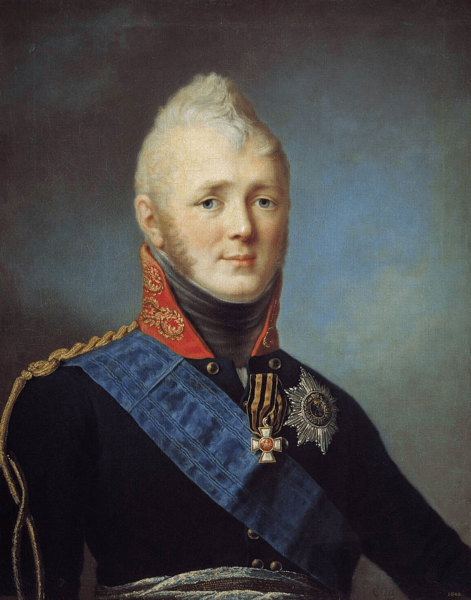
[Image of Alexander from Wikimedia Commons by Abrahamvwi7, CC BY-SA 4.0].
Although it wouldn’t occur for nearly a decade, in anticipation of Alexander’s death a number of officers of the Imperial Russian Guard established the Union of Salvation in 1816. The group broke apart in 1820 but reformulated into two groups – a Southern Society and a Northern Society. Guard officers Nikita Muraviev, Prince Sergei Trubetskoy and Prince Eugene Obolensky led the Northern Society which had as its goals a British-style constitutional monarchy with a limited franchise, the abolition of serfdom, and equality before the law.
When Alexander died on 1 December 1825, the royal guards swore allegiance to the presumed heir, Alexander’s brother Constantine. However, Constantine renounced his claim to the throne within less than a month. After some negotiation Nicholas, the youngest of the three brothers, eventually agreed to become tsar.
The confusion between Tsars Constantine and Nicholas opened the way for the Northern Society to act.
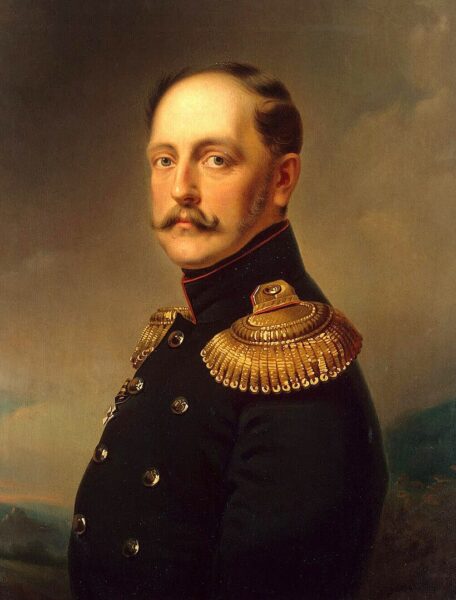
[Image of Nicholas from Wikipedia – Public Domain.]
With the capital in temporary confusion and an oath sworn to Constantine who had abdicated, the anticipated vacuum arose. The Society held secret meetings trying to convince regimental leaders not to swear allegiance to Nicholas. These efforts culminated in the Decembrist Revolt. The Society elected Trubetskoy as interim leader.
On the morning of 26 December, a group of officers commanding about 3,000 men assembled in Senate Square in Saint Petersburg, where they refused to swear allegiance to the new tsar, Nicholas I, proclaiming instead their loyalty to Constantine and their Decembrist Constitution. Trubetskoy had a last-minute change of heart and failed to turn up at the Square as did his second in command, Colonel Bulatov, also vanished from the scene. The rebels appointed Prince Eugene Obolensky as a replacement leader.
A stand-off outside the Senate Building ensued between approximately 3,000 rebels and 9,000 troops loyal to Nicholas. Nicholas tried negotiating with the rebels sending a respected military hero, Count Mikhail Miloradovich, as his representative. After Pyotr Kakhovsky fatally shot Miloradovich, Nicholas ordered three artillery pieces to open fire and the revolt ended on that first day. The surviving rebels were tried and sentenced to exile in Siberia – namely Irkutsk.
Into the 20th century.
Most of the city’s churches were razed during Stalin’s reign of destruction but Lyuba took us to two that survived. The oldest of those, Spasskaya Church is pictured below.
As one might expect, the Irkutsk WW II Memorial which is adjacent to the Spasskaya Church is larger than the one in Naushki. This memorial has an honor guard comprised of five school children from area schools selected as elite and deserving of the honor. Each group stands watch for fifteen minutes before being formally and ceremonially replaced. We were able to watch one of these Changing of the Guard rituals and I noted that they march down the street firmly stepping heel first so their footsteps echo across the square. On entering the memorial itself, they step toe first thus silencing their footfalls.
The artificial flowers are typical of those left at these memorials.
A step back – working on the…
In 1891, Czar Alexander III ordered the construction of the Trans-Siberian Railroad where our merry band of travelers will spend the next two days as we continue our journey westward to Ekaterinburg. Similarly to the U S construction of the Trans-Continental Railroad, construction started simultaneously in Moscow in the west and Vladivostok in the east. A significant step toward joining the various segments of rail line that would become the Trans-Siberian was the completion of the Circum-Baikal section near Irkutsk after the Russo-Japanese War in 1905 eliminating the need to use ferries to cross the lake. You can see a photo of the statue honoring Alexander III and the builders of the railway in the Irkutsk folder.
Looking sequentially through the photo album, the next pictures are of the Epiphany Cathedral. I think the building itself is worth a picture or two even if it had no historical significance.
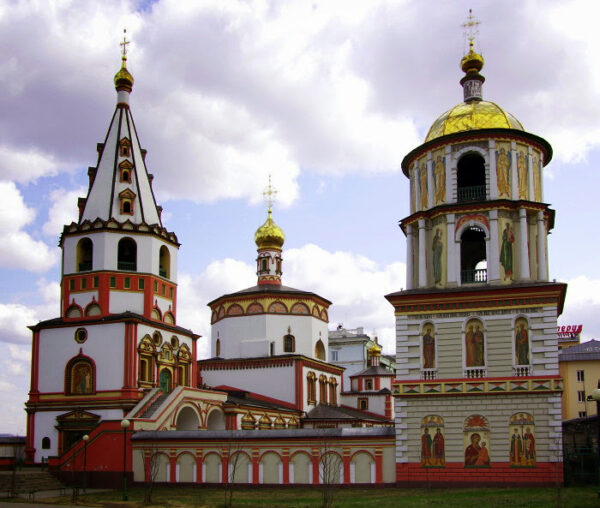
Construction on the building began in 1718 and took six years to complete. It served as the city’s main church for over 150 years and is considered a precursor of the Siberian Baroque architectural style.
Before moving on to the next church in the portfolio, you’ll see pictures of locks on iron railings on a bridge. This was our first exposure to a tradition we’d see repeated across the nation. Allegedly, the tradition has its source in an old Russian folk tale in which a young couple was locked in a granary on their wedding night to ensure privacy and a long marriage. At some point someone symbolically revived this tradition by placing a padlock on a bridge and throwing the key in the water to symbolize the permanence of their marital union. I couldn’t determine where or when people started doing this but we’d see it again and again.
There are also a few pictures of the Znamensky Monastery. This monastery was established in 1693 and the first church on the grounds was built in 1757. The entire complex wasn’t completed until sometime in the first quarter of the nineteenth century. Today it serves as headquarters for the archdiocese of the Russian Orthodox Church in East Siberia.
Next up on the Irkutsk hit parade is the statue honoring Admiral Alexander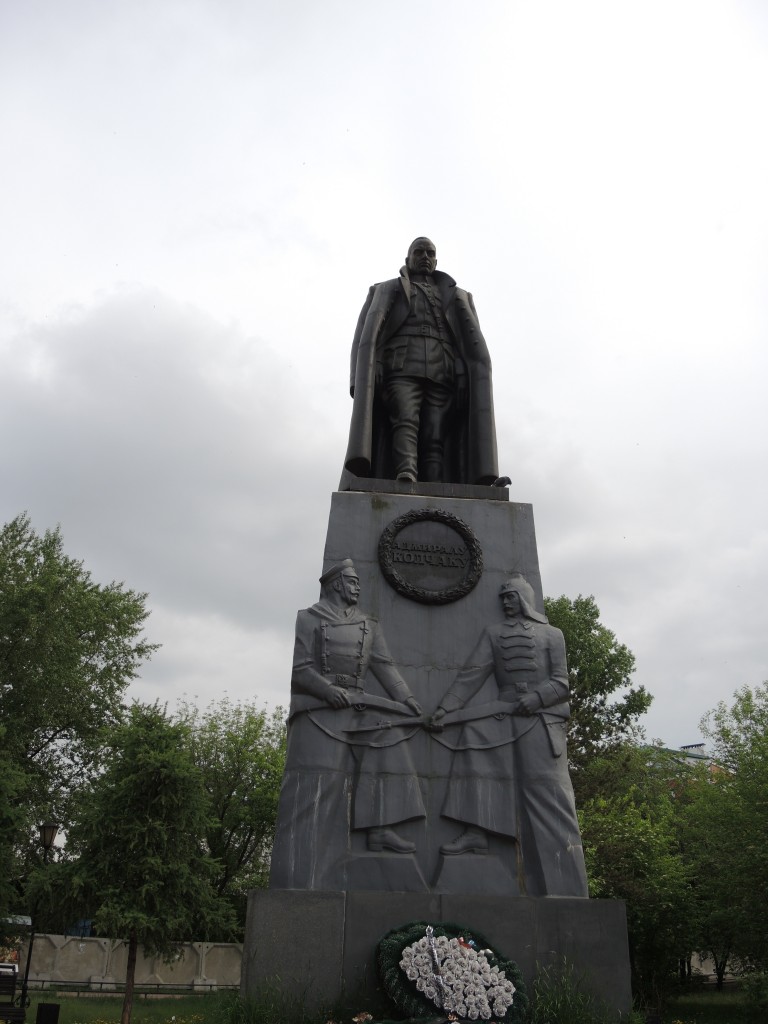
Kolchak. (He is not, as far as I could determine, any relation to the eponymous character Darren McGavin played in The Night Stalker television movies and series.) This Kolchak is, at the very least, a mildly controversial figure.
He was born in Saint Petersburg and made a name for himself first as a member of Eduard Toll’s exploration of the Arctic between 1900 and 1902 and was later decorated for his efforts in the battles to control Port Arthur (now Lushunkou) in the Russo-Japanese war. He spent four years as a prisoner of war in Nagasaki. After that war he commanded one of two vessels sent on a cartographic exploration of the Bering Strait in the early twentieth century.
So far so good. The controversy arises after the February 1917 revolution, the Brest-Litovsk Trreaty, and the abdication of Czar Nicholas II. Kolchak was an anti-communist conservative who, with British and American support, commanded an Army in Omsk roughly 1000 kilometers east of Ekaterinburg. This army came to be called the Whites and on 18 November 1918, Kolchak established his own government thereby triggering the Russian Civil War that Lenin and the Red Army eventually won. Kolchak was executed in 1920.
The history lesson is almost over. In Irkutsk there’s a great tradition of wooden houses. Many of them were destroyed in an earthquake in 1905 but several remain standing and there are efforts to restore some others. Because this was a city of exiled intellectuals and nobility, these houses became something of a status symbol and often featured ornate carved details. This is one of those rather patrician upper-class houses.
Next up, our lunchtime adventure.
Note: In keeping with my 2022-2023 reformation of the blog into shorter entries, backdated to maintain their sequence, any comments on this post might pertain to its new configuration. See the full explanation in the post Conventions and Conversions.
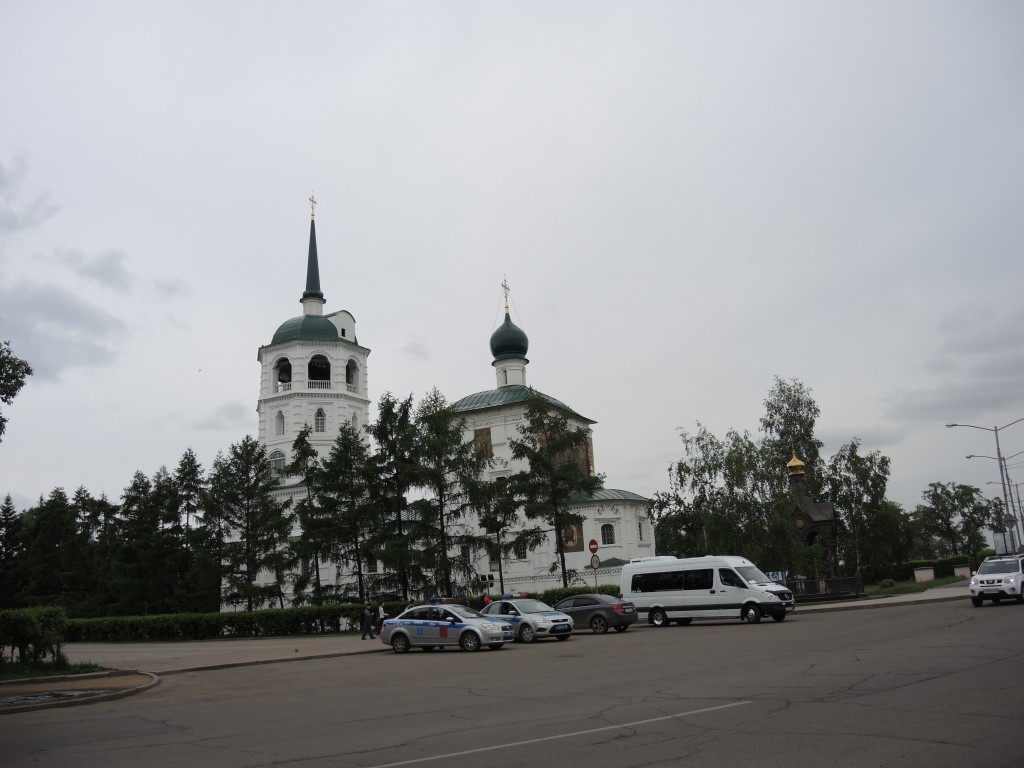


Cultural differences in service are always entertaining. Many a time i was in a Paris or Brussels eatery/bar and pretended to not speak English as I listened to the American tourists insist on American type foods (especially soda with large amounts of ice…which is not common) and forcefully compain (loudly as well) about how “this isn’t what we are used to”. I always wondered by people would travel to foreign places and not want to experience the local variations.
Kudos to you and your traveling partners for seeking a Russian Restaurant. I enjoyed the account greatly.
Your comments and pictures just goes to show that people will create an environment where they feel comfortable even in exile.
I love that the restaurant was called Hobbiton!! Does this indicate a large Russian fan base for LOTR? Too bad you did not have caviar, black bread, borscht and blinis. This is the Russian fare that I would be seeking. That and some good, cold vodka. Hope you all were able to procure decent provisions for the long train ride. Guess I will find out tomorrow.
I don’t know about the LOTR fan base. I never had caviar & finding borscht without meat proved well nigh impossible.